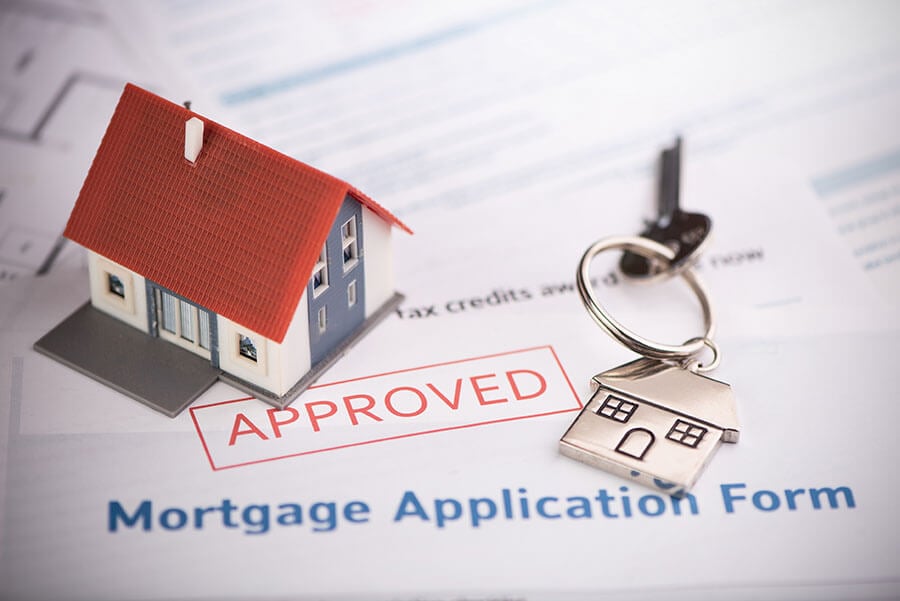Understanding Conventional Mortgage Loans: Advantages and Requirements
Understanding Conventional Mortgage Loans: Advantages and Requirements
Blog Article
The Necessary Variables to Think About When Finding Between Fixed-Rate and Adjustable-Rate Home Loan Car Loans
When reviewing mortgage options, debtors encounter a pivotal decision between adjustable-rate and fixed-rate loans, each providing possible mistakes and unique benefits. Trick factors to consider such as rates of interest stability, predictability in monthly payments, and the effects of prospective price adjustments can substantially affect long-lasting economic health. Recognizing the awaited period of homeownership and the general expense of borrowing can shape one's approach. As these variables link with private monetary situations and risk resistance, the effects of this option may not be as uncomplicated as they seem. What subtleties should be focused on in this important decision-making process?
Rate Of Interest Price Stability
When selecting a home loan, understanding rate of interest stability is crucial for notified decision-making. Rate of interest can dramatically affect the total price of a home loan, and recognizing the nature of these prices is necessary for debtors. Fixed-rate home loans use the benefit of consistent month-to-month payments over the life of the loan, protecting consumers from market changes. This security makes it possible for property owners to prepare their funds with greater certainty, as they will certainly not be influenced by rising rate of interest prices.
On the various other hand, variable-rate mortgages (ARMs) begin with reduced first rates that may alter regularly based upon market problems. While this can lead to reduced repayments originally, it additionally presents unpredictability, as debtors might deal with raised settlements if passion prices climb. For those taking into consideration an ARM, it is essential to analyze the likelihood of price adjustments, the possibility for settlement boosts, and the length of the initial fixed-rate period.
Ultimately, the selection in between fixed-rate and adjustable-rate mortgages pivots on specific threat resistance and economic conditions. Recognizing rate of interest stability helps consumers make educated decisions that align with their lasting monetary goals.
Monthly Settlement Predictability
While debtors commonly prioritize rates of interest stability, the predictability of month-to-month repayments is equally important in the home mortgage choice process (Conventional mortgage loans). Month-to-month settlement predictability plays a critical duty in budgeting and monetary preparation, as it straight affects a house owner's capital and general financial health and wellness
Fixed-rate mortgages supply a constant monthly repayment throughout the life of the car loan, enabling borrowers to prepare for and plan their expenditures efficiently. This security can be particularly helpful for first-time property buyers or those on a set income, as it removes the uncertainty connected with rising and fall repayments.
Alternatively, adjustable-rate home loans (ARMs) commonly feature reduced first payments that can alter with time, leading to prospective irregularity in monthly responsibilities. While originally enticing, this changability can complicate financial preparation, particularly if consumers do not represent future price changes.
Prospective Rate Changes
In the realm of variable-rate mortgages (ARMs), possible rate changes represent a considerable variable that consumers must thoroughly think about. Unlike fixed-rate home loans, where the rates of interest continues to be unmodified for the life of the car loan, ARMs are defined by changing rates of interest that are connected to market indices. This irregularity can cause considerable modifications in regular monthly repayments, affecting the customer's financial planning and budgeting.
Generally, ARMs have an initial fixed-rate period throughout which the rate of interest is steady. After this period, however, the price readjusts at established intervals-- typically yearly. Borrowers must be mindful of the anchor margin and index made use of to compute these modifications, as they directly influence future passion prices. Furthermore, ARMs frequently include caps that restrict exactly how much the rates of interest can enhance at each adjustment visit homepage and over the life of the loan, which can give some level of protection versus drastic price walkings.
Understanding these prospective changes is vital for customers, as they straight affect long-term settlement obligations. Consequently, evaluating individual financial circumstances and risk tolerance is crucial when choosing whether an ARM straightens with one's financial objectives.
Car Loan Term Factors To Consider
Finance term factors to consider play an essential duty in the decision-making procedure for debtors selecting between fixed-rate and adjustable-rate home loans. The length of the car loan term considerably impacts monthly payments, passion prices, and general financial preparation.

Ultimately, customers must assess their individual scenarios, monetary goals, and market problems when evaluating the implications of lending term choices within each home mortgage type.

Total Expense of Borrowing
Fixed-rate mortgages provide foreseeable monthly repayments, as the rate of interest price remains constant throughout the funding term. This predictability can lead to reduced overall expenses, particularly in a secure or decreasing passion rate setting.
Alternatively, adjustable-rate mortgages (ARMs) generally begin with reduced first rates, resulting in lowered ahead of time costs. However, these rates can increase after an initial duration, bring about possibly greater lasting prices. Customers should think about the frequency and extent of price changes, along with the general lending duration, to properly analyze the economic effects.
Moreover, the overall cost of loaning incorporates not only rates of interest but likewise costs and various other linked prices, such as closing expenses and insurance (Conventional mortgage loans). As a result, when examining home loan options, consumers you can try here need to perform a comprehensive cost evaluation over the life of the financing. By doing so, they can make an educated choice that straightens with their monetary goals and run the risk of tolerance
Verdict
In final thought, selecting in between fixed-rate and adjustable-rate home loan demands careful factor to consider of a number of essential variables. Rates of interest security and monthly repayment predictability are extremely important for reliable budgeting, while the potential for price modifications in ARMs presents financial unpredictability. In addition, the expected duration of homeownership and the general price of borrowing, including rate of interest prices and associated charges, have to align with private monetary conditions and risk tolerance. Such a thorough analysis will help with educated decision-making in home mortgage option.
Secret considerations such as rate of interest rate stability, predictability in regular monthly repayments, and the ramifications of prospective rate modifications can substantially affect long-lasting monetary health. Interest rates can significantly influence the total price of a home loan, and acknowledging the nature of these rates is important for customers. Unlike fixed-rate mortgages, where the interest price remains unchanged for the life of the lending, ARMs are defined by varying passion rates that are tied to market indices. In addition, ARMs usually consist of caps that limit how much the interest price can increase at each modification and over the life of the car loan, which can give some level of protection versus extreme price walkings.
Passion rate security and monthly payment predictability are vital for reliable budgeting, while the possibility for rate modifications in ARMs introduces economic uncertainty.
Report this page